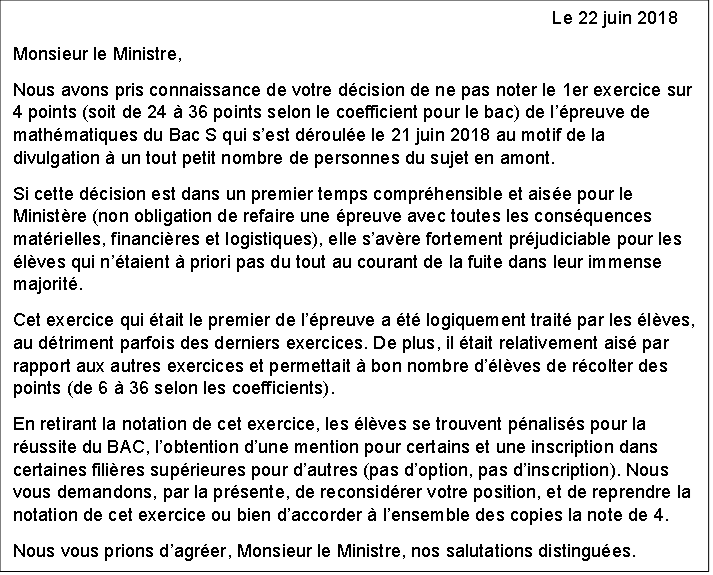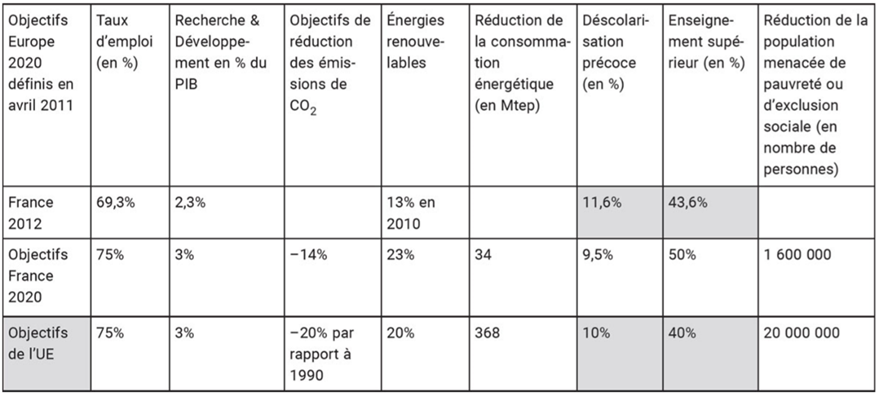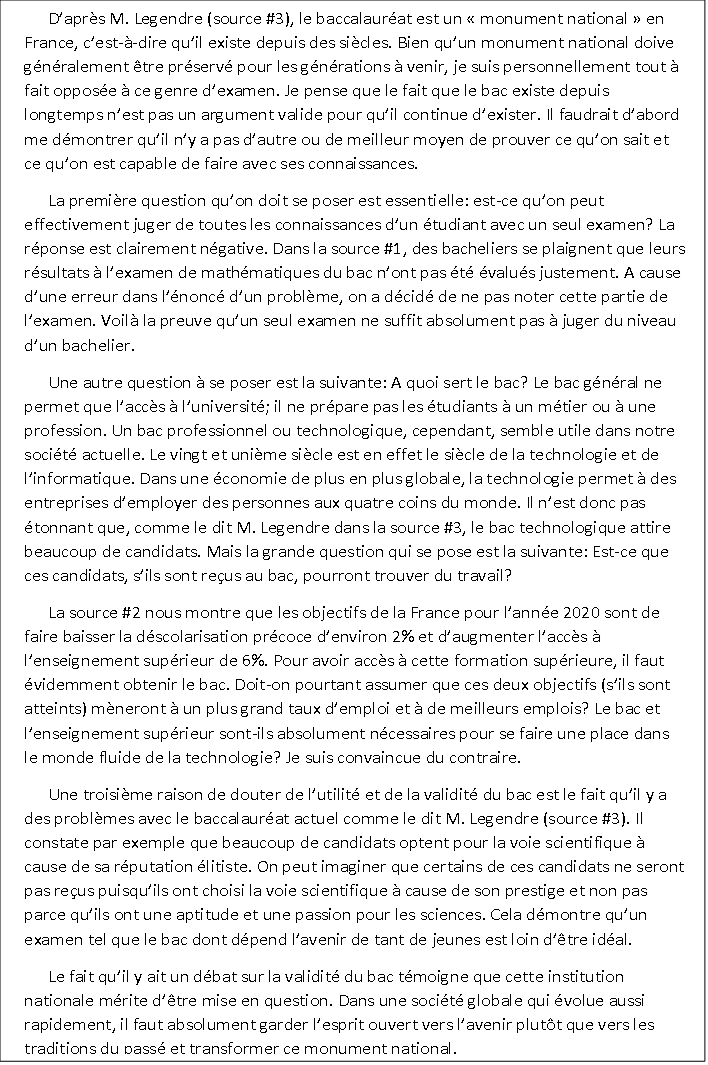Chapter 5: Writing the Argumentative Essay
A. Instructions, Strategies, and Tips
1. Practice Paraphrasing
When you hear or read something in French, always ask yourself how you would most easily be able to summarize key points in your own words.
When you don’t quite know how to explain use French words you already know even if the wording is not exactly correct or precise.
Suppose you want to express this message in French: One tends to get frustrated when facing big challenges. You can do this in several ways. Consider these possibilities:
On est généralement/souvent/quelquefois frustré quand on fait face à de grands défis.
Il est possible qu’on se sente frustré face à de grands défis.
The verb “to get” is frequently used in English and has a variety of translations in French. In order to convey its correct meaning in French, you must first paraphrase. What is another way to express “get” in this sentence? Look at the following easy possibilities:
On a tendance à devenir frustré.
On a tendance à être frustré.
2. Practice Synthesizing Information
Pull together various pieces of information by common threads or themes when composing your argumentative essay.
Listen to your teacher, to your classmates, and to interviews.
Then draw together the common threads that you heard from all of them.
While reading articles or literary extracts, practice extracting themes from these texts such as environmental issues, family issues, identity issues, and so on.
3. Practice Critical Thinking
Be analytical in what you hear and read. Ask yourself “why” and “how” questions all the time.
You are expected to understand that there are various perspectives to a single issue.
You must determine the cause and effect relationships that lead to various perspectives.
Determine and discuss what has led to your topic becoming an issue and why/how the issue is affecting people.
Focus on specific contexts of the issue to narrow down the discussion field (consider the contexts cited in your sources).
Mention the opposing argument. By doing this, you demonstrate a broad understanding of the issue and prove that you understand other perspectives even though you may disagree with them.
Concede a little, as necessary. Admitting that your position is not perfect can alleviate your reader’s concerns that you have tunnel vision of the issue. Doing this can be really persuasive.
Propose a solution. Giving a logical and feasible solution to your issue provides authority and credibility and it can make for a strong conclusion.
Examine the implications. What effect will this issue have on individuals and/or the world? Discussing what lies ahead for your topic also makes for a strong approach to a conclusion.
4. Practice Writing Compound Sentences
Good writing includes a good mix of simple, compound, and complex sentences.
Simple sentences consist of a subject, a verb, and a complement.
For example: Il est d’accord. He agrees.
Compound sentences consist of two or more simple sentences joined by conjunctions.
For example: Il répond oui car il est d’accord. He answers yes for he agrees.
Common coordinators include the following:
et and
ou or
ni nor
donc so/therefore
car for/because
mais but
5. Practice Writing Complex Sentences
In order to add detail and enrich your replies, practice enriching sentences by using a variety of dependent clauses.
Infinitive clauses introduced by prepositions or prepositional phrases such as in order to (pour), instead of (au lieu de), before (avant de)
Subordinate clauses introduced by and (et), or (ou), either/or (ou, ou*), but (mais)*
Subordinate clauses introduced by because (parce que), since (puisque), for (car), and while (pendant que)
Subordinate clauses introduced by conjunctions such as de peur que + subjunctive or de peur de + infinitive
Subordinate clauses introduced by impersonal expressions such as Il est impossible que + subjunctive mood or Il est clair que + indicative mood
B. Useful Vocabulary for an Argumentative Essay
To Establish Contrasts
au lieu de cela instead of that
cependant however
malgré tout in spite of everything/all the same
pourtant yet
sinon otherwise
toutefois however
To Establish a Sequence
tout d’abord first of all
de plus moreover
en deuxième lieu secondly
j’ajouterais que I would like to add that
en conclusion finally
To Make Convincing Points
bien sûr que of course
certainement certainly
en effet indeed
en fait in fact
naturellement naturally
sûrement surely
To State Your Own Position
à mon avis/selon moi in my opinion
je suis persuadé(e)/convaincu(e) que I am convinced that
je maintiens que I maintain that
il est certain que it is certain that
il est incontestable/indéniable que it is incontestable that
C. Essential Vocabulary Contained in Sources and Prompts for the Essay on Previous AP French Language and Culture Exams
baisser: Le taux de production a baissé.
The production rate went down.
abaisser: Cela ne devrait pas abaisser le niveau des études.
It should not lower the level of studies.
augmenter: La sous-production fait augmenter les prix.
Under-production makes prices rise.
croître: Cette dernière année, on a vu croître la production des voitures autonomes.
This past year, we saw the production of autonomous cars go up.
rebondir: Le taux de harcèlement a rebondi.
The harassment rate has rebounded.
le pourcentage: Le pourcentage de jeunes adultes est énorme.
The percent of young adults is enormous.
le reportage: Le reportage est sérieux.
The column/story/report is serious.
le tableau: Ce tableau contient les résultats d’un sondage.
This chart/table contains the results of a poll.
la remise en cause: La remise en cause des OGM est intéressante.
The questioning of GMOs is interesting.
le droit: Le droit de vote est dans la constitution.
The right to vote is in the constitutio
le taux: Le taux de consommation a diminué.n.
The consumption rate has diminished.
D. How to Write an Argumentative Essay
Required Steps
State your point of view to your audience (perspective).
Develop an argument to support your point of view.
Make a list of specific facts and examples to support your argument.
Prioritize, edit, and/or sequence the facts and details in order of importance to build the argument.
Form and state a conclusion.
Required Steps
You must demonstrate understanding of viewpoints in the print and audio sources presented to you.
You must cite the sources presented in your essay without simply repeating verbatim what you read or heard.
You must take a position on the issue and develop an argument.
You must organize your essay and present your ideas clearly.
What Is Not Required
You are not expected to summarize the points of view or understand every nuance or detail in the various sources.
You are not required to embrace all the points of view in the sources.
You are not required to specify that you are referring to the print text, the audio source, or the chart.
Although you may if you like; simply refer to source #1, #2, or #3 when referring to the sources.
E. Instructions, Prompts, and Exemplary Essay
The presentational writing portion of the AP French Language and Culture Examination tests your writing ability in an essay based on information from three sources:
printed text
audio source
chart or graphic
You will have 6 minutes to read the essay topic and the printed material.
You will hear the audio material twice.
Your task is to synthesize the information and write an argumentative essay on the topic using information from all three sources.
Here are the instructions you can expect to be given for this portion of the exam:
|
|
|---|---|
You will write an argumentative essay to submit to a French writing contest. The essay topic is based on three accompanying sources, which present different viewpoints on the topic and include both print and audio material. First, you will have 6 minutes to read the essay topic and the printed material. Afterward, you will hear the audio material twice; you should take notes while you listen. Then, you will have 40 minutes to prepare and write your essay. In your essay, clearly present and thoroughly defend your own position on the topic. Integrate viewpoints and information you find in all three sources to support your argument. As you refer to the sources, identify them appropriately. Also, organize your essay into clear paragraphs. | Vous allez écrire un essai argumentatif pour un concours d’écriture de langue française. Le sujet de l’essai est basé s trois sources incluses, écrites et sonor qui présentent différents points de vue le sujet. Vous aurez d’abord 6 minutes pour lire le sujet de l’essai ainsi que le documents écrits. Ensuite, vous écoute le document sonore deux fois; vous devriez prendre des notes pendant l’écoute. Enfin, vous aurez 40 minutes pour préparer et écrire votre essai. Dans votre essai, vous présenterez vous défendrez de la manière la plus complète votre point de vue sur le suje Vous soutiendrez votre argumentation e intégrant des perspectives et des donné tirées de chacune des trois sources. Il faudra indiquer de manière adéquate le sources auxquelles vous faites référenc Prenez soin également de structurer clairement votre essai à l’aide de paragraphes. |
You will now begin this task | Vous allez maintenant commencer cette tâche. |
Preparation for Essay #1
Thème du Cours: La Vie Contemporaine
When reading the prompt, underline or highlight the topic and task statement. Look at this example:
|
|---|
To prepare for listening to and reading the sources, draw three columns in which to take notes:
one for the print selection
one for the graph or chart
one for the audio selection
While reading, note some essential ideas for your essay.
While listening, you must catch one or two usable ideas in the audio selection.
One of your sources is a graph or statistical data; use this factual evidence to support your opinion or main idea.
SOURCE #1


SOURCE #2

La problématique « 80% »: le contexte international
Elaborée en 2000, la « stratégie de Lisbonne » est arrivée à échéance à la fin de l’année 2010. Les Etats membres et la Commission européenne ont donc adopté un nouveau plan stratégique pour les dix ans à venir.
Adoptée le 17 juin 2010 par le Conseil européen, la « stratégie Europe 2020 », qui succède à la stratégie de Lisbonne, regroupe l’ensemble des priorités et objectifs communs que l’Union européenne s’est fixés pour la prochaine décennie. La stratégie Europe 2020 s’appuie sur les enseignements tirés de la stratégie précédente.

SOURCE #3
(Audio) Vous avez 30 secondes pour lire l’introduction. Transcript of audio text is in Appendix B, page 580 of the textbook.

Example of notes that you might take while examining the three previous sources:
Document Écrit— Source #1: Suggested Notes | Données—Source #2: Suggested Notes | Document Audio— Source #3: Suggested Notes |
|---|---|---|
Erreur à l’examen de math du bac S: | Le taux d’emploi en France devra être de 75% (augmentation d’environ 6%) en 2020 | Bac littéraire en crise |
4 pts perdus: est-ce juste? | La déscolarisation précoce en France devra être de 9,5% (réduction d’environ 2%) en 2020 | Bac scientifique: beaucoup de candidats |
50% de jeunes Français devront avoir accès à l’enseignement supérieur en France en 2020 (augmentation d’environ 6%) | Bac technologique: beaucoup de candidats | |
Bacs professionnels: 72 bacs différents | ||
Bac: tradition et point de repère et rite de passage |
Writing Essay # 1
take 5 minutes to prepare an outline
30 minutes to write your essay
5 minutes at the end to review and edit.
Use your notes to make an outline.

When you write your essay, use the following strategies:
Use a formal tone. Address the reader as vous as the essay is meant to be read by an adult and professional audience.
Do not hesitate to use the first person as you are expected to state a personal point of view (as in Je pense que . . .). However, make sure you support your point of view in a logical and reasonable manner.
Be convincing.
Quote sources. Use “source #1,” “source #2,” and “source #3” terminology. You may also state dans l’article, dans l’interview, d’après le tableau/le graphe.
Stay focused on your point of view even though you may cite differing points of view.
Support your arguments with facts and examples.
Summarize and then conclude your argument by referring to the thesis statement as well as the main points.
The number of paragraphs in your essay is less important than the fact that you organized your ideas into paragraphs. It is recommended that you develop 4– 5 paragraphs.
paragraph to introduce the topic and state your point of view
2-3 paragraphs to support your argument with facts and examples
1 paragraph to conclude your essay
Read over your essay and improve it as necessary.
Check the variety of structures that you used.
Check your use of cohesive devices.
Check your vocabulary, redundant words, and use of pronouns.
Exemplary Essay

 Knowt
Knowt
